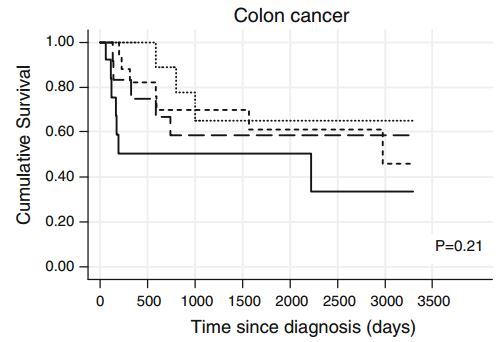Cancer patients 64% less likely to die if have high level of vitamin D
Serum levels of 25-hydroxyvitamin D and survival in Norwegian patients with cancer of breast, colon, lung, and lymphoma: a population-based study.
Cancer Causes Control. 2011 Dec 23.
Tretli S, Schwartz GG, Torjesen PA, Robsahm TE.
The Cancer Registry of Norway, Institute of Population-based Cancer Research, PB 5313, Majorstuen, 0304, Oslo, Norway, steinar.tretli@kreftregisteret.no.
PURPOSE: We investigated the association between serum levels of 25-hydroxyvitamin D (25-OHD) and risk of death in Norwegian cancer patients.
METHODS: The study population was 658 patients with cancers of the
breast (n = 251),
colon (n = 52),
lung (n = 210), and
lymphoma (n = 145),
obtained from JANUS, a population-based serum bank in Norway. Serum samples were collected within 90 days of cancer diagnosis and were analyzed for 25-OHD. Patients were diagnosed during 1984-2004 and were followed for death throughout 2008. We used Cox regression models to assess the relationship between serum 25-OHD and risk of death.
RESULTS: Three hundred and ninety-nine patients died during follow-up, of whom 343 (86%) died from cancer . Adjusted for sex, age at diagnosis, and season of blood sampling, patients with 25-OHD levels below 46 nmol/L at diagnosis experienced shorter survival. Compared to patients in the lowest quartile of serum 25-OHD, the risk of cancer death among patients in the highest quartile was significantly reduced ( HR 0.36 95% CI 0.27, 0.51). The estimated change in risk of cancer death was most pronounced between the first and the second quartile. The associations between 25-OHD levels and survival were observed for all four cancers .
CONCLUSIONS: Higher circulating serum levels of 25-OHD were positively associated with the survival for cancers of the breast, colon, lung, and lymphoma.
PMID: 22193397
Lung Cancer

5X more likely to survive if > 33ng vs <18 ng: no mention of smoking
Colon Cancer

📄 Download the PDF with several more charts from VitaminDWiki
See also VitaminDWiki
Review of possible ways that vitamin D fights cancer – Jan 2012
Mechanisms of the Anti-Cancer and Anti-Inflammatory - 2011.PDF
Vitamin D for prevention and treatment of Cancer - technical July 2010 file
Cancers and Vitamin D Council and Dr. Grant
Video on how Vitamin D reduces Cancer – Feb 2011 Dr. Garland
Vitamin D and Cancer Treatment and Prevention – presentations May 2011
Vitamin D has a complex relationship with Cancer – meta-analysis July 2011
See also Web
GrassRoots Health Many papers and videos on Cancer and Vitamin D - especially Breast Cancer
Search several other websites on vitamin D topics - such as Cancer
